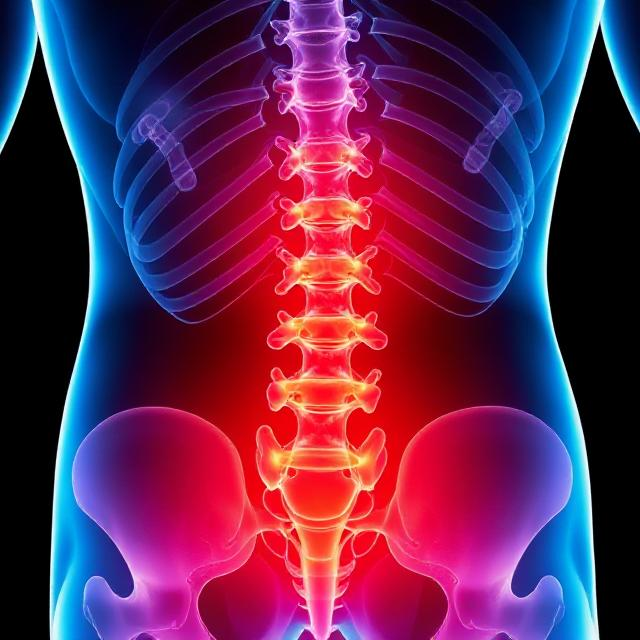5 Back Pain Symptoms You Shouldn’t Ignore


Low back pain
Low back pain is a common ailment that can range from mild discomfort to severe, debilitating pain. While most cases of back pain are temporary and can be attributed to factors like muscle strain or poor posture, certain symptoms may indicate more serious underlying issues. Ignoring these symptoms can lead to complications and prolonged discomfort. In this article, we will explore five back pain symptoms that should not be overlooked, discussing their potential causes and associated risk factors.
Prevalence
A systematic review, encompassing 165 students from 54 countries, was conducted to examine the worldwide prevalence of low back pain. The findings revealed that low back pain is most prevalent among females and individuals aged between 40 and 80 years [1]. Another review focusing on Selangor reported that 84.6% of pregnant women had experienced low back pain. Additionally, the review also highlighted that common occupational groups associated with low back pain in Malaysia include teachers, drivers, and nurses [2].
Symptoms
Persistent Pain:
Low back pain characterized by persistent discomfort or recurrent episodes lasting more than a few weeks can signal various underlying issues. For instance, mild to moderate muscle strain typically requires only a few weeks for recovery. If the pain persists beyond this timeframe, this enduring pain may be indicative of conditions such as herniated discs, spinal stenosis, arthritis, or misalignment of the pelvis or lumbar spine.
Radiating Pain:
Radiating pain from the lower back to the legs or arms, known as radicular pain, is a symptom that suggests nerve involvement. Conditions such as sciatica, where the sciatic nerve is compressed or irritated, or herniated discs that press on nerves, can cause this type of pain. The discomfort may follow the path of the affected nerve, leading to sensations of pain, tingling, or numbness along its course.
Numbness and Tingling Sensation:
Low back pain accompanied by sensations of numbness and tingling in the lower extremities may indicate nerve compression or irritation. Swelling of the joints, often stemming from misaligned bones, is a common factor that can contribute to these symptoms. Individuals may experience a lack of sensation, a “pins and needles” feeling, or weakness in the affected areas.
Bladder and Bowel Changes:
Changes in bladder or bowel function in conjunction with low back pain can be indicative of serious conditions such as cauda equina syndrome. This syndrome involves compression of the nerves at the lower end of the spinal cord and requires immediate medical attention to prevent permanent damage of the involved nerves. Symptoms may include difficulty controlling bowel or bladder movements, loss of sensation in the genital area, and potential weakness in the lower limbs.
Shoulder Pain and Knee Pain:
While low back pain is primarily associated with the lumbar spine, it can sometimes manifest as referred pain in other areas of the body. Shoulder pain, for example, may be linked to issues in the upper lumbar spine or thoracic region. Additionally, lumbar nerve (L2, L3, L4) irritation due to pelvis or lumbar spine misalignment can contribute to knee pain. These secondary pains highlight the interconnectedness of the musculoskeletal system, emphasizing the need for a comprehensive assessment when evaluating low back pain.
Causes
Low back pain can stem from several causes, including:
Pelvis and Lumbar Spine Misalignment:
One prevalent cause of low back pain is misalignment in the pelvis and lumbar spine, often resulting from trauma or injury. Significant force or impact, such as a fall or car accident, can displace the vertebrae in the lumbar spine or alter the position of the pelvic bones. Additionally, pelvis and lumbar spine misalignment may also stem from activities of daily living, such as incorrect lifting technique, poor sitting and standing posture, and repetitive movement which can place undue stress on the pelvis and spine. This misalignment can lead to inflammation and swelling on the surrounding structures, causing pain and discomfort. Physical trauma can result in immediate misalignment and leads to restricted and painful movement of the low back, while repetitive injuries over time can also contribute to this issue.
Congenital Malformation Leading to Spinal Instability:
Congenital malformations such as sacrum malformation, lumbarization, sacralization, and anatomical leg length discrepancy which is relatively common, can contribute to spinal instability and subsequent low back pain.
Degeneration of the Spine:
The natural aging process can lead to degeneration of the spine, contributing to low back pain. Degenerative changes, such as osteoarthritis, can affect the joints and discs in the lumbar region. As discs lose water content and the spine undergoes wear and tear, individuals may experience disc problems, such as herniation or bulging. These issues can cause localized pain and, in some cases, radiating pain due to nerve compression.
Muscle Strain:
Muscle strain is a common and often acute cause of low back pain. Overexertion, sudden movements, or lifting heavy objects can lead to microscopic damage in the muscles supporting the spine. This strain can result in localized pain and stiffness. While typically not as severe as some other causes, untreated muscle strain can contribute to chronic back issues if not addressed promptly.
Risk factors
Several factors may increase the risk of developing serious back pain:
Age:
Degeneration is common when people age. The spine undergoes natural wear and tear over the years, and as individuals age, the intervertebral discs may lose water content, becoming less flexible. This can contribute to (symptoms such as low back pain, neck stiffness, numbness and tingling sensation down the limbs) // conditions such as osteoarthritis, spinal stenosis, and degenerative disc disease, which are more prevalent in older populations.
Occupation:
Certain occupational activities can place excessive stress on the spine. Jobs that require heavy lifting or involve prolonged periods of sitting, as well as those requiring repetitive motions, can contribute to spinal misalignment, muscle strain, disc herniation, and other spinal issues.
Poor Posture:
Maintaining poor posture, whether during sitting, standing, or lifting, can easily misalign the spine and pelvis and causes nerves to be compressed and irritated. Over time, incorrect body mechanics can contribute to chronic back pain and increase the risk of developing conditions like herniated discs or muscle imbalances.
Obesity:
Carrying excess body weight places additional strain on the spine, particularly in the lumbar (lower) region. This increased load can accelerate degenerative changes, contribute to disc problems, and result in nerve compression or irritation eventually.
Conclusion
In conclusion, low back pain is a widespread condition ranging from mild discomfort to severe, debilitating pain. While often attributed to temporary factors like muscle strain or poor posture, it can be indicative of more serious underlying issues, making it crucial not to ignore certain symptoms. Recognizing and understanding the diverse causes and symptoms associated with low back pain is crucial for accurate diagnosis and effective management. Seeking timely healthcare advice for persistent or concerning symptoms such as chiropractors who are specialized in musculoskeletal system, ensures that appropriate interventions can be implemented to address the underlying causes and improve overall well-being.
References
- Abas, A. H., Daud, A., Mohd Hairon, S., & Shafei, M. N. (2023, June). Prevalence and risk factors of low back pain in Malaysia: A scoping review. The Malaysian journal of medical sciences : MJMS. https://www.ncbi.nlm.nih.gov/pmc/articles/PMC10325122/
- Hoy, D., Bain, C., Williams, G., March, L., Brooks, P., Blyth, F., Woolf, A., Vos, T., & Buchbinder, R. (2012, June). A systematic review of the global prevalence of low back pain. https://onlinelibrary.wiley.com/doi/epdf/10.1002/art.34347



